CALIFORNIA NATIVE PLANT SOCIETY
Channel Islands Chapter
Channel Islands Chapter
Rare Plant Profiles:  Fritillaria ojaiensis
Fritillaria ojaiensis
 Fritillaria ojaiensis
Fritillaria ojaiensis
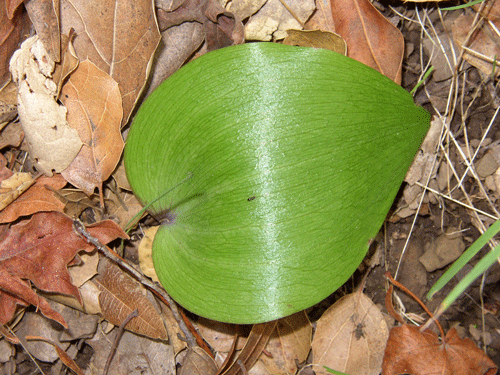
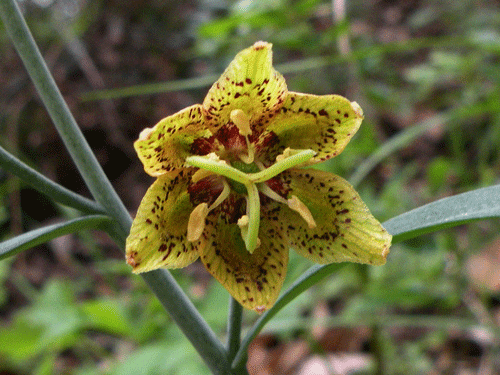
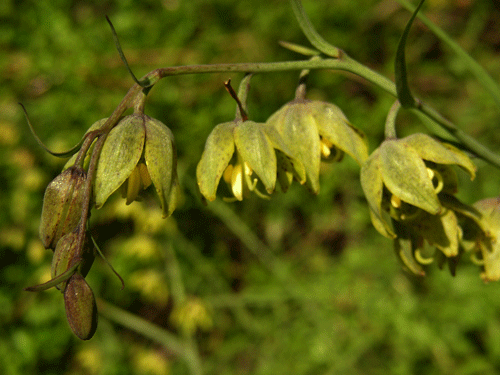
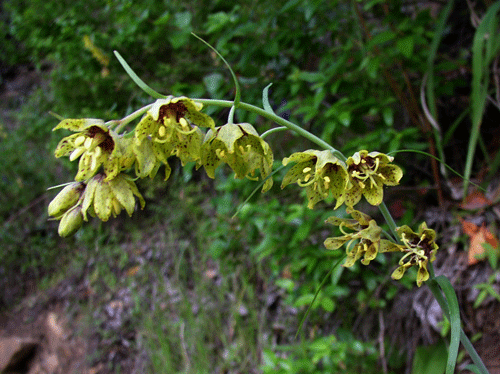

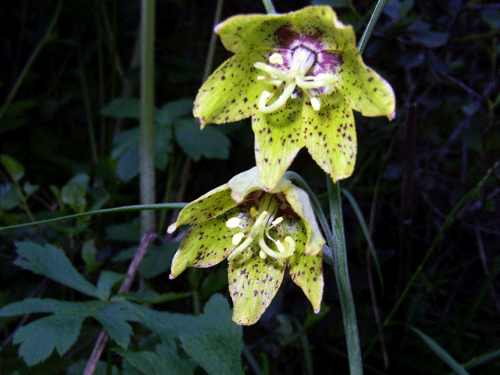
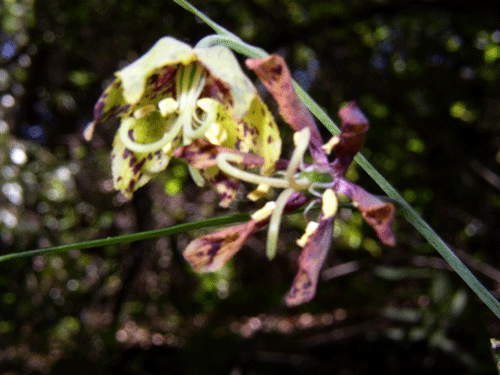
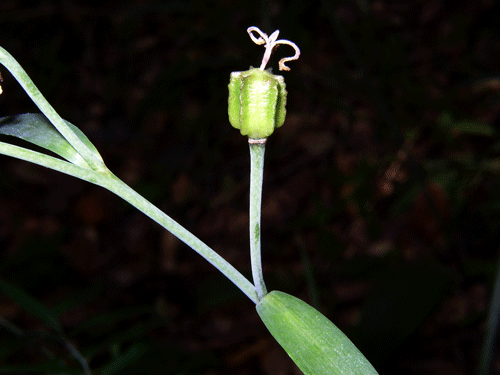
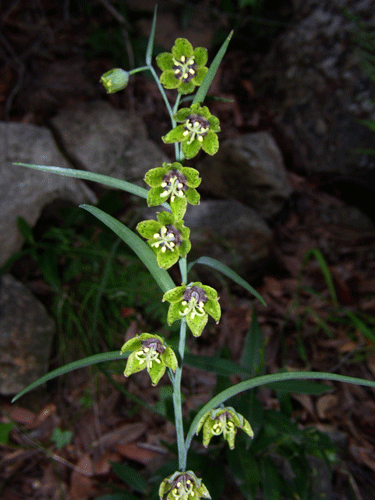

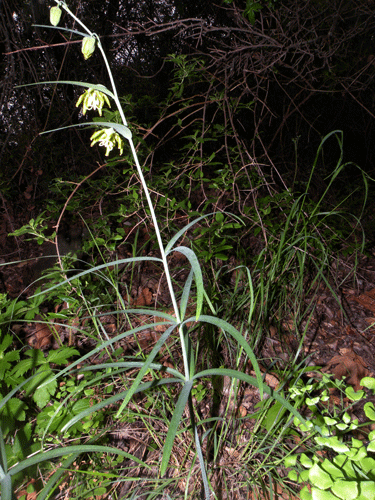
This photo by John Chesnut is of a Fritillaria cf. ojaiensis from San Luis Obispo County.
Compare the patterning on the tepals with those above to see the clear differences.
Are the SLO Co. plants a new species? Maybe.
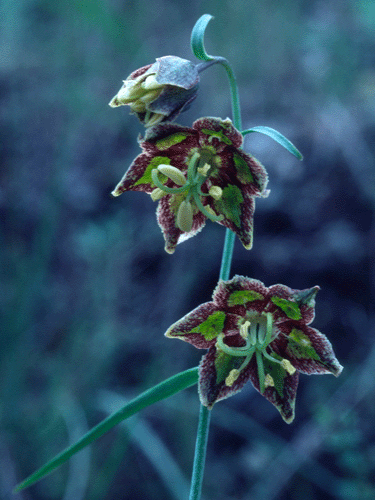
Fritillaria ojaiensis is a rare herb of shaded slopes, growing in talus under the canopy of trees and large shrubs. It is known between 350 and 700 meters (1,150 and 2,300 feet) in elevation. Fritillaria ojaiensis occurs primarily in the central portion of Ventura County, extending westward along the Santa Ynez Mountains of Santa Barbara County, and possibly in San Luis Obispo County (although the flowerss there look different).
Fritillaria ojaiensis is known for sure from Ventura and Santa Barbara Counties, with similar looking plants in coastal San Luis Obispo and Monterey Counties. Ventura County populations have been found along Catherina Creek, along the Ocean View Trail (near White Ledge Peak), at two spots in Wheeler Gorge (along State Route 33/North Fork Matilija Creek), at Valley View Camp in upper Stewart Canyon, at two locations along the Gridley Canyon Trail, in Senior Canyon (an eastern tributary to Senior Canyon Creek), in Horn Canyon, at at least four locations in upper Sisar Canyon, and in Santa Paula Canyon at three sites (including the Type Locality at Pine Flats/Bigcone Camp). In Santa Barbara County it is known from Nineteen Oaks Camp in Upper Oso Canyon, along the Santa Cruz Trail northeast of Upper Oso Campground, along W. Camino Ceilo west of State Route 154, in Tequepis Canyon above Lake Cachuma (south of/above SR154), and in the San Rafael Mountains along the Davy Brown/Manzana Schoolhouse trail. If the plants further north are indeed Fritillaria ojaiensis then it can be found on the ridgetop east of Little Falls Spring south of Santa Margarita Lake, in Perfumo Canyon in the Irish Hills, on Cypress Mountain, and on Pine Mountain in the Santa Lucia Mountains of San Luis Obispo County. The purported Monterey County occurrences are all in the Santa Lucia Mountains, along the Cruikshant Trail and along Los Burros Creek on Fort Hunter-Liggett.
It is only somewhat threatened by development since most of the known populations are on National Forest land. The California Native Plant Society has included it on its List 1B, Plants Rare and Endangered in California and Elsewhere. The Los Padres National Forest has put it on their Sensitive Plants list. NatureServe has assigned it rarity rankings of:
Below is a simple map of known populations of Fritillaria ojaiensis.
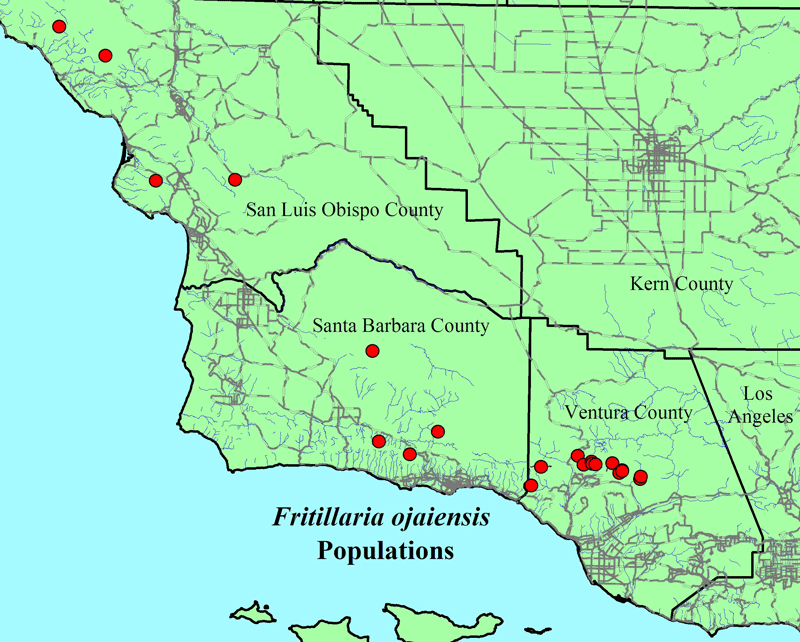

Fritillaria ojaiensis is rarely observed in shaded areas on slopes, primarily associated with Coast Live Oak Woodland and California Bay Forest vegetation, sometimes mesic chaparral. It is locally scattered at many of its occurrences, particularly in Coast Live Oak Woodland habitats. Fritillaria ojaiensis contributes to the ground layer, growing under the tree and shrub canopy along with the following common associates: Quercus agrifolia (Coast Live Oak), Umbellularia californica (California Bay), Sanicula crassicaulis (Pacific Snakeroot or Sanicle), Polypodium californicum (California Polypody Fern), Heteromeles salicifolia (Toyon), and (). The Type Locality (the place from which it was first found and collected, and formally described) is at "Pine Flats" or Bigcone Camp in upper Santa Paula Canyon, Ventura County.
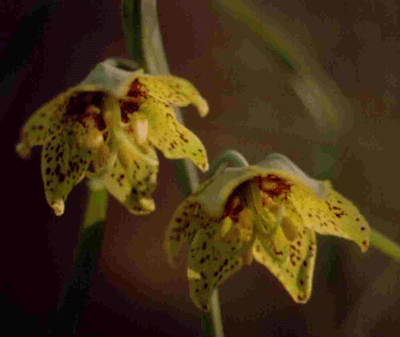
Photographs by David L. Magney
CHANNEL ISLANDS CHAPTER, CALIFORNIA NATIVE PLANT SOCIETY, PO Box 6, Ojai, CA 93024-0006
Special thanks to Carlin Moyer for the beautiful illustrations on our site.
Last updated: 10 January 2010
For website comments: webmaster(at)cnpsci(dot)org
For website comments: webmaster(at)cnpsci(dot)org
CNPS
HOME | SITE MAP | CHANNEL ISLANDS
CHAPTER HOME